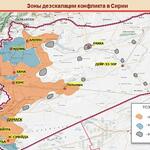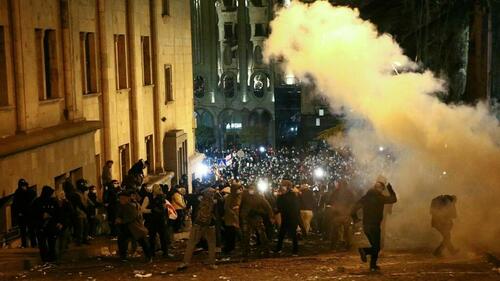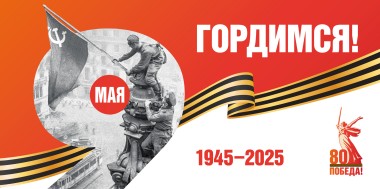The tragic news came from the Syrian Arab Republic last weekend. On Sunday, July 30, the correspondent of the television channel Russia Today, Khalid al-Khatib, was killed as a result of shelling by the militants in the area of Sukhna in the east of the province of Homs during the information coverage of the operation of the Syrian army against the militants IGIL *. His colleague, the operator of the TV channel RT, was also wounded.
The tragedy that has taken place once again shows how far the situation in Syria is from a final settlement. Nevertheless, all objective sources recognize a significant success in this direction in comparison with the horror that prevailed in the Arab Republic before the decisive actions of Russia, which, in essence, is the engine of a growing peacekeeping process.
In May of this year, with the active role of Russia, the next round of negotiations on Syria in Astana ended with a breakthrough: a concrete document was adopted that could open the way to peace in the SAR. The countries-guarantors of the armistice (Russia, Iran and Turkey) signed a Memorandum on the creation of zones of de-escalation in the Arab Republic in the presence of the special envoy of the UN Secretary-General Stefan de Mistura, observers from the United States and Jordan, the delegation of official Damascus and part of the armed opposition. The Russian military noted that the text of the document could also be coordinated with 27 field commanders of units operating in the created zones.
The Russian initiative implies the creation of four districts. The first, the most extensive, is located in the north of Syria. It covers the province of Idlib, as well as the bordering northeastern parts of the province of Latakia, the western provinces of Aleppo and the northern regions of the province of Hama. In total, more than a million Syrians are living there. The second zone is in the north of Homs province. It included the cities of Er-Rastan and Tel-Biss, as well as nearby areas. About 700 thousand civilians live in the territory of the Eastern Guta region. The fourth zone is located in the south of Syria in the border regions of the province of Deira and Kuneitra bordering Jordan. On the borders of the areas of reducing tension, it will be set up security zones with checkpoints for the passage of civilians and humanitarian aid and monitoring points for the cease-fire regime.
It was decided that, within the boundaries of de-escalation zones, military operations between government troops and armed opposition formations will be stopped. This applies to the use of all types of weapons, including air strikes. The work of the checkpoints and observation posts, as well as the management of the security zones, will be carried out by the personnel and formations of Russia, Turkey and Iran.
According to Moscow, the proposed package of measures will preserve the territorial integrity of Syria and contribute to the process of political settlement. Damascus supported the initiative as a way of returning to normal life and continuing the fight against IGIL * and other terrorist groups.
Deputy Defense Minister Fomin said at a special briefing that the implementation of the Memorandum would allow separating the opposition from the banned groups, as well as ensuring safe and unhindered humanitarian access to the de-escalation zones, which in turn would provide the population with medical, food and other necessary assistance. In addition, the restoration of infrastructure facilities, primarily water and energy, will be organized. All this will create conditions for the safe and voluntary return of refugees and internally displaced persons. At the same time, the creation of zones is designed to prevent militants from entering areas where the ceasefire is in effect.
It should be noted that Moscow's initiative is supported by the SCO member states and the BRICS. According to everyone's opinion, there was a real chance to strengthen the ceasefire regime and give impetus to the inter-Syrian negotiation process in Geneva.
At the same time, there are those who do not approve the international efforts aimed at normalizing the situation in the SAR. In Israel, they declared that the creation of zones of de-escalation would not be supported, since anti-Israeli groups could allegedly be concentrated in them. The head of the committee on international relations of the Council of Federation, Konstantin Kosachev, stated in this connection that "Israel is afraid of strengthening Iran's position in the region, and also, it seems, restrictions on Tel Aviv's ability to act against Assad. However, no one will cancel such an important document, which gives hope for a turning point in the Syrian situation, only because of Israel's assumptions about Iran's hypothetical intentions. Tehran is just as weighty a participant in the Middle East processes, like Israel. And it secured its role in the Syrian settlement with an active position on this issue, both in a diplomatic format (in particular, at the talks in Astana, where Iran is a guarantor along with Russia and Turkey), and in the fields of military confrontation with the common enemy-terrorists.
Therefore, it would be more reasonable for Tel-Aviv not to take up arms against the agreement reached between Russia and the United States, but to find ways to live with it and get the benefits that are obvious for all the countries of the region from the victory over the IGIL. "
It is noteworthy that the measures to end the war in Syria are moving to a practical level. According to the results of negotiations between the Russian Defense Ministry and the moderate Syrian opposition, with the mediation of the Egyptian side, agreements on the functioning of the de-escalation zone "Eastern Guta" were signed as part of the Astana agreements. The document defines the boundaries of the de-escalation zone, the deployment sites and powers of the control forces, as well as the delivery routes of humanitarian assistance for the population. The first convoy, as well as transportation of the wounded is planned in the near future. In addition, a plan is being implemented to create a "South Zone" with the participation of Russia, the United States and Jordan, which is the best confirmation of concrete actions.
However, as noted, international efforts to end the war in Syria meet opposition from opponents of the conflict settlement. Thus, a number of Western media reported that an air strike had taken place on July 24 in the "East Guta" zone. The Russian Center for the Reconciliation of Warring Parties called the messages "an absolute lie aimed at discrediting the peace process" and once again noted that since 12.00 on 24 July in this region is operating an agreement on the order of operation of the de-escalation zone, one of the key points of which is a complete ceasefire.It remains to ask a simple question: to whom hamper the Russian initiatives supported by the international community aimed at restoring peace in Syria?
I think the answer is obvious.
On the map: zones of de-escalation in Syria. The source - Ministry of Defense of Russia.
Inal Pliev,
International expert IA "Res







